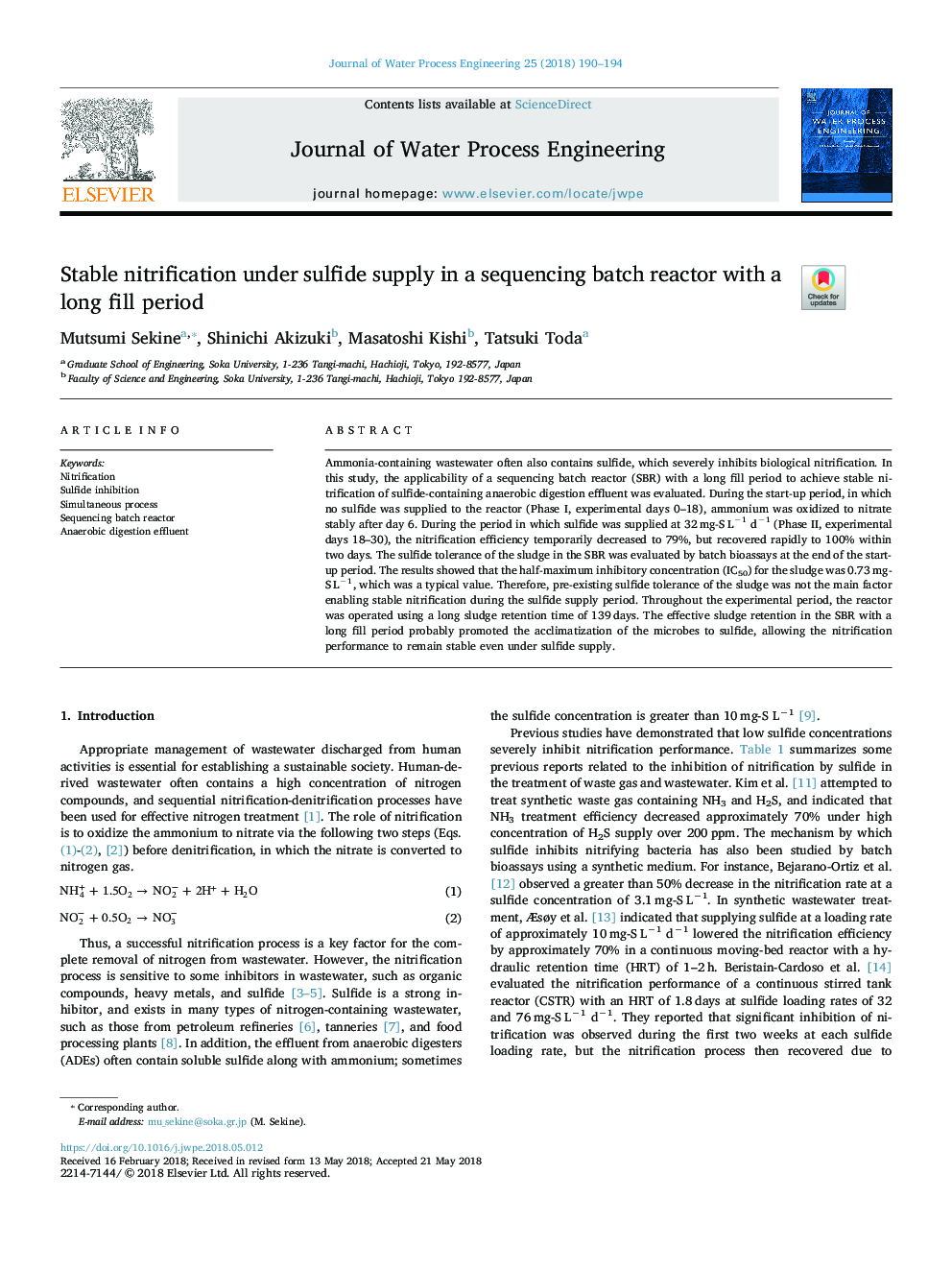| Article ID | Journal | Published Year | Pages | File Type |
|---|---|---|---|---|
| 6671863 | Journal of Water Process Engineering | 2018 | 5 Pages |
Abstract
Ammonia-containing wastewater often also contains sulfide, which severely inhibits biological nitrification. In this study, the applicability of a sequencing batch reactor (SBR) with a long fill period to achieve stable nitrification of sulfide-containing anaerobic digestion effluent was evaluated. During the start-up period, in which no sulfide was supplied to the reactor (Phase I, experimental days 0-18), ammonium was oxidized to nitrate stably after day 6. During the period in which sulfide was supplied at 32â¯mg-Sâ¯Lâ1 dâ1 (Phase II, experimental days 18-30), the nitrification efficiency temporarily decreased to 79%, but recovered rapidly to 100% within two days. The sulfide tolerance of the sludge in the SBR was evaluated by batch bioassays at the end of the start-up period. The results showed that the half-maximum inhibitory concentration (IC50) for the sludge was 0.73â¯mg-Sâ¯Lâ1, which was a typical value. Therefore, pre-existing sulfide tolerance of the sludge was not the main factor enabling stable nitrification during the sulfide supply period. Throughout the experimental period, the reactor was operated using a long sludge retention time of 139â¯days. The effective sludge retention in the SBR with a long fill period probably promoted the acclimatization of the microbes to sulfide, allowing the nitrification performance to remain stable even under sulfide supply.
Keywords
Related Topics
Physical Sciences and Engineering
Chemical Engineering
Chemical Engineering (General)
Authors
Mutsumi Sekine, Shinichi Akizuki, Masatoshi Kishi, Tatsuki Toda,
